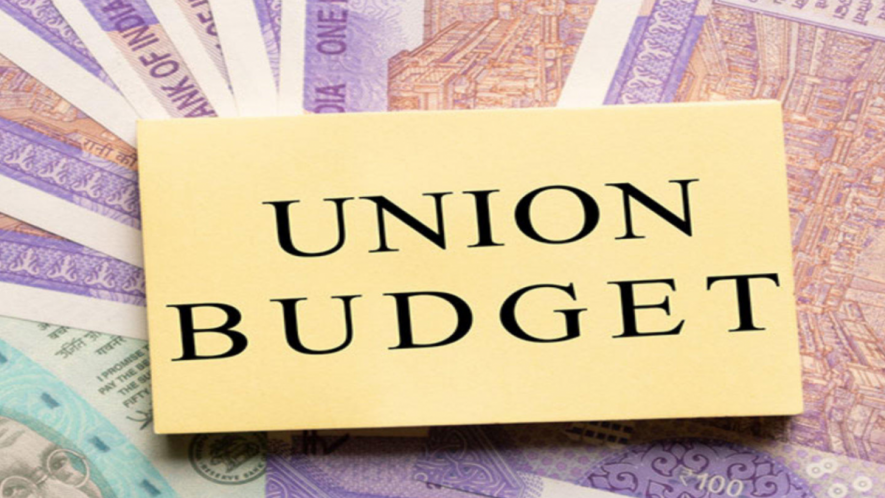Union Budget: Hype in the Time of Pandemic Crisis

In an attempt to persuade listeners into believing that Budget 2021-22 will complete the conquest of disease and unleash an era of post-COVID expansion, Finance Minister Nirmala Sitharaman placed special emphasis in her Budget speech on two sets of initiatives. The first was a claim that the Budget marks a new beginning for the Indian state’s engagement with peoples’ health, riding on an unprecedented 137% hike in allocations for the health sector, from a mere Rs 94,452 crore allocated in Budget 2020-21 to Rs 2,23,846 crore in Budget 2021-22.
The second was a declaration that, rising above concerns with meeting revenue expenditures while managing the size of the fiscal deficit, the government was to focus on capital spending aimed at providing an infrastructural push that will drive high economic growth. Capital spending is to rise from Rs 4.12 lakh crore budgeted in 2020-21 to Rs 5.54 lakh crore in the Budget for 2021-22. Combined with measures to leverage private finance (through private entry into banking and insurance and the launch of a new development finance institution) and attract private investments with varied concessions, this is expected to spur growth in sectors varying from power and roads to ports, airports and the railways.
This ostensibly two-track transformative agenda receives focus when the crisis unleashed by the COVID-pandemic and the government’s lockdown responses is still with us, all talk of a V-shaped recovery notwithstanding. Moreover, the multiple stimulus packages announced by the government, involving incremental central spending of only around 1.5% of gross domestic product or GDP, managed to provide only minimal support in the form of food, MNREGA (rural job guarantee scheme) employment, and cash transfers to an incompletely covered mass of those devastated by the crisis. So, the Budget was expected not just to look to the post-future COVID, but to continuing with the substantially incomplete task of addressing the costs of the crisis.
On this count, the Budget disappoints. What it promises to do with respect to the pandemic is make a partial contribution to reining in the pandemic by transferring Rs 35,000 crore to states to finance a part of the effort to vaccinate the population, and hopefully win herd immunity. But, for the rest, it pretends as if the war has been won, and drastically scales down the inadequate support it had provided to the vulnerable sections that were ground down by the social and economic crisis that flowed from the pandemic and the government’s response.
Consider, for example, the Mahatma Gandhi National Rural Employment Guarantee Scheme (MGNREGS). Expenditure in 2020-21 has been placed at Rs 1,11,500 crore (Revised Estimates or RE) compared with a budgeted Rs 61,500 crore and an actual expenditure of Rs 71,687 crore in 2019-20. Workers deprived of their livelihoods, including return of migrants to rural areas, had turned to the MGNREGS, resulting in the spike in allocations for this demand-driven scheme. It can hardly be claimed that the system has returned to normalcy. Yet, the budgetary allocation for MGNREGS for 2021-22 has been placed at just Rs 73,000 crore.
A similar picture is visible in the case of food subsidies, which, according to the RE in 2020-21, had risen to a high of Rs 4,22,618 crore, compared with the Budget estimate (BE) of Rs 1,15,570 crore and an actual outlay of Rs 1,08,688 crore in 2019-20. The decision to provide even 5 kg of grain free of cost to those covered under the National Food Security Act implied a huge increase in spending under this head.
It can hardly be said that the need for a strong safety net involving free or low-cost distribution of food will not be felt in the coming year when the recovery will leave many untouched. Yet, the allocation for food subsidy for 2021-22 is budgeted at a little more than half of what was spent in 2020-21. A part of this money is also likely to be used to clear arrears due to the Food Corporation of India (government-owned procurement agency) and other agencies. Thus, while in 2020-21, the government had no choice but to provide support, however limited, for many, even if not all, who had been devastated by the pandemic and the lockdown, it is using its own claim that the economic crisis is behind us to withdraw that support.
Seen in that light, the hype about the transformative health and capital spending agenda appears in the first instance a way of deflecting attention from the government’s inadequate intervention to offer a social safety net for the poor who have been severely affected by the crisis. That conclusion is corroborated by a close scrutiny of the substantial content of the agenda that is supposed put India on a new development trajectory.
To conjure up a huge 137% increase in health spending, the finance minister has bundled together with the Rs 35,000 crore that would only partially cover the unavoidable vaccination drive, proposed spending on a range of programmes loosely defined as covering “health and well being”.
Remarkably, the huge increase in the “health and well being” budget, does not show up in actual allocations for the department of health and family welfare (DOHFW), which should be at the core of any health initiative. Only about Rs 71,000 crore of the 2021-22 “health and well being” allocation goes to the regular budget of MOHFW.
Before the seriousness of the pandemic had been recognised, Budget 2020-21 provided for around Rs 65,000 crore for the department of health. Compared with that figure, the BE for 2021-22 points to a not-too-spectacular 9.6% increase. What is more, the RE of expenditure of DOHFW in 2020-21 stood at Rs 78,866 crore, relative to which the BE for 2021-22 reflects a 9.6% decrease.
Moreover, the finance minister’s “health and well being” allocation for 2021-22 also includes the Finance Commission’s mandated grants to states for water and sanitation and health of Rs 49,214 crore, which cannot be considered discretionary and enhanced expenditures on the part of the Centre.
But what is surprising, is that around Rs 50,000 crore of the “health and well being” allocation is for expenditure on the Jal Jeevan Mission that seeks to provide safe and adequate drinking water through individual household tap connections in rural and urban areas. While the provision of safe drinking water does help improve good health and well-being, it cannot be counted among core expenditures on health. It is this component of the health and well-being budget that registers a sharp spike from Rs 10,905.50 crore in the RE for 2020-21 to Rs 49,757.75 crore in the BE for 2021-22, or by more than 450%.
All of this expenditure is to be financed with a transfer from the central road and infrastructure fund. Originally named the Central Road Fund, this was a corpus meant for investment in road and highway expansion and was meant to be financed with special cesses levied for the purpose. It was renamed in 2018 and is now being used to finance social infrastructure, with investment in areas like roads and highways expected to be increasingly met with private finance.
This attempt to hand over a range of conventional infrastructural sectors to private investors constitutes the core of the second plank of the government’s transformative agenda. The allocations for capital spending in the Budget would be hardly adequate to implement the ambitious, though vaguely defined, infrastructural push.
So, the Budget announces a process by which government support would be combined with measures to attract private investment in infrastructure, bring in private financial operators in banking and insurance who will implement “innovative” financial strategies, and create a business-friendly development financing institution with government provided seed money.
The government’s own support for this infrastructural thrust is to be financed by selling its existing assets. The money is to come from two sources: disinvestment of public sector equity; and monetisation or sale of public assets. With receipts from disinvestment budgeted at Rs 1,75,000 crore in 2021-22, some of the best public sector firms and financial institutions are to be put up for sale.
There are three elements here: disinvestment of equity, strategic sale, and privatisation of the public financial sector. The finance minister referred specifically to privatisation/disinvestment of two public sector banks and a general insurance company and an IPO (initial public offer) to be launched by Life Insurance Corporation or LIC. To moves such as these is to be added an effort to “monetise assets” or sell assets, especially land, with public sector agencies and rely on that rather than resources from taxation to finance capital expenditure.
Given the near complete failure of the ambitious Rs 2,10,000 crore disinvestment plan in the Budget for 2020-21, it is not clear how successful this venture to hawk productive assets will be, especially if the speculative fever in the stock market unwinds. But to the extent that it does, the real beneficiary will not be Indians looking for a post-COVID renewal, but a few industrialists and favoured foreign investors. It is at them that this budget is targeted.
Get the latest reports & analysis with people's perspective on Protests, movements & deep analytical videos, discussions of the current affairs in your Telegram app. Subscribe to NewsClick's Telegram channel & get Real-Time updates on stories, as they get published on our website.























